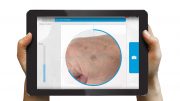In the modern world, the human experience is becoming more connected. With consumer devices and applications managing tasks and experiences for users, it’s clear that medical devices cannot fall behind. Beyond ensuring that innovative medical devices meet consumer expectations, medical device manufacturers need to take a closer look at the human machine interface (HMI) to transform the future of health and patient delivery. HMI, which gives humans the ability to operate as controllers for machines, plays a huge role as the medical technology industry evolves and delivers smarter and more connected innovations.
Managing rising demands in healthcare
From the aftershocks of the pandemic and a growing ageing population with chronic diseases, rising costs and ongoing recruitment challenges, healthcare providers need to find new ways to efficiently care for large and diverse patient populations, while also encouraging individuals to manage their own care. Recent studies reveal that just under 50% of UK citizens live with long-standing health problems or chronic diseases, while The Institute for Public Policy Research estimates long-term illnesses costs the economy £43 billion a year.
Connected health is on the rise
Thankfully, an increase in connected health can address the majority of these issues. Whether it’s calculating steps on fitness trackers, FaceTiming, or asking Alexa for something, it’s easy to take for granted the ways in which technology makes our lives easier and shapes our habits. When it comes to health, we also rely on products like glucose monitoring systems, wearable vital sign monitors and sleep support devices.
These products have one thing in common: their intuitive design and human machine interface makes them easy or sometimes automatic to operate, which makes them “stickier” with end users. This needs to be a guiding principle when designing medical devices. They should make our lives simpler, healthier, and more efficient without more steps or complexity. To support consumer demand and market trends, healthcare companies must make sure that at the design phase, HMI and the overall user experience is considered. By anticipating both the opportunities and the challenges of a more connected world and ensuring devices fit seamlessly into the end user’s life, medical device manufacturers can gain a competitive edge while still delivering an improved patient experience.
For an ageing population
When designing smart devices, the elderly population is not often seen as the target audience. Older users can struggle with newer technologies, especially if the information is seen as too technical or complicated for them to follow. This makes effective HMI more vital, because designing for the average consumer — not just the most tech-savvy one — means devices are more likely to be used in the way they were designed.
There is a big opportunity to improve care for the older generation through more intuitive medical devices with an easy, intuitive HMI, especially according to The Journal of Public Health who suggest that age (along with other factors such as gender and working status) correlate with non-adherence with very-elderly people being some of the worst affected which is expected to cost the NHS over £900 million a year. Helping the elderly interface with medical equipment can help in addressing care gaps, boost patient education and improve overall healthcare quality.
Tackling chronic illnesses directly
The rise of chronic illnesses and the associated financial implications is something of a concern. The NHS defines a chronic disease as a “health problem that requires ongoing management over a period of years or decades and is one that cannot currently be cured but can be controlled with the use of medication and/or therapies.” These can be attributed to both the older population as well as key risk behaviours like tobacco use, bad nutrition, physical inactivity and excessive alcohol consumption. Additionally, some people who contracted COVID-19 are experiencing long-term effects.
These patients need fast, easy, and reliable access to quality care so that they can manage ongoing health conditions and mitigate adverse outcomes.
Innovative medical devices can also improve quality of life. For example, a soft robotic wearable that can assist upper arm and shoulder movement in people with ALS. Though the product is not yet available commercially, its intuitive human machine interface — where participants learned to operate the device in less than 15 minutes — will allow it to integrate into a patient’s everyday life with little disruption.
Alleviating recruitment issues
Another challenge for the healthcare industry is ongoing challenges with staffing. COVID-19 disrupted more than just global supply chains, and in many cases the pandemic interrupted the education and training for those embarking on a medical career. Many also decided against remaining in the medical field due to burnout from stressful work environments.
As the healthcare industry addresses these ongoing staffing challenges, they need to implement both short and long-term strategies. For healthcare systems, strategies could include recruitment, training, and retention initiatives, while medical device manufacturers could look into how they can improve product design to make devices error-proof so that they can be operated by a newer, less experienced or part-time workforce. Improving human machine interface for telemedicine solutions can alleviate the demands on the system, allowing patients in underserved or remote areas the chance to access quality care even when there are staffing shortages.
The need for HMI in medical device development can’t be overstated. As the world becomes more digitised and connected, medical device manufacturers are responsible for making sure that products are innovative, efficient and of course user-friendly. By focusing on the needs and experience of all demographics of end users and making HMI a priority in the device’s design, we can improve patient care, enhance the user experience and ultimately save lives.
By Jennifer Samproni, Chief Technology Officer, Health Solutions, Flex





